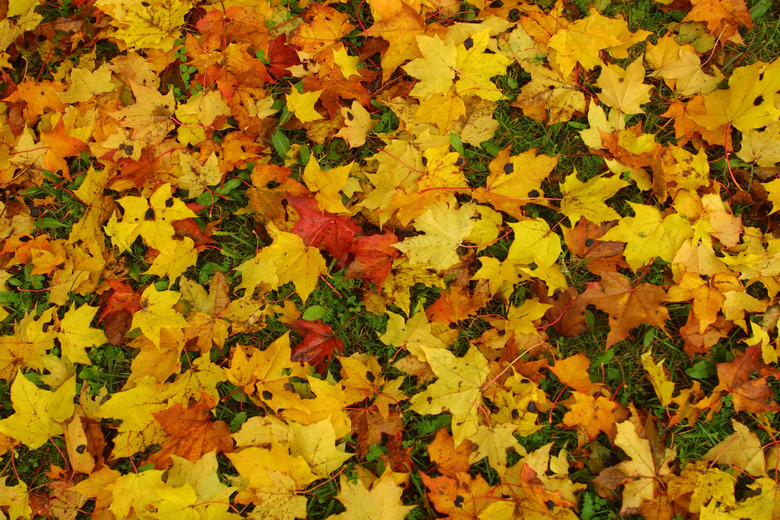Can Tree Leaves Be Burned For Heating Fuel?
Even if you have only one tree in your yard, you know that every autumn you'll have to rake up several piles of leaves once they fall. If you have a shredder, tree leaves make excellent compost or mulch in the garden. Otherwise, most of those leaves will end up in your yard debris bucket.
Even if you have only one tree in your yard, you know that every autumn you'll have to rake up several piles of leaves once they fall. If you have a shredder, tree leaves make excellent compost or mulch in the garden. Otherwise, most of those leaves will end up in your yard debris bucket. It's tempting to use your leaves in your home's fireplace, but there are problems associated with burning leaves that could cause damage to your home or injury.
Poor Fuel Source
Good fuel sources like seasoned hardwood release steady heat as they burn slowly. Leaves, however, burn quickly and do not give off much heat. Once you ignite a leaf it will burn out within a minute. Commercial fuel manufacturers have machines that compact tree leaves into a pellet to burn longer and hotter, but simply throwing a pile of leaves into your fireplace will not provide the long-lasting heat like that produced by firewood.
- Even if you have only one tree in your yard, you know that every autumn you'll have to rake up several piles of leaves once they fall.
- It's tempting to use your leaves in your home's fireplace, but there are problems associated with burning leaves that could cause damage to your home or injury.
Fire Hazard
Some leaves, such as conifer needles, spark and send out embers when burnt. A glass screen in front of your fireplace can help with this, but sparks may also come out of your chimney creating a fire hazard for you and your neighbors. Likewise, the flat leaves of deciduous trees can ignite and float up your chimney. If they do not burn out, they risk starting a fire where they land.
Chimney Problems
If your leaves aren't fully dry when you burn them, they can release substances that lead to creosote accumulation in your chimney. Conifer needles contain waxes that also contribute to creosote build up. Creosote reduces the air flow within your chimney, which causes harmful pollutants from your fire to enter your home rather than being vented outside. Creosote build up can also lead to fires within the chimney.
- Some leaves, such as conifer needles, spark and send out embers when burnt.
- Creosote reduces the air flow within your chimney, which causes harmful pollutants from your fire to enter your home rather than being vented outside.
Health Problems
When burned, leaves release particles and carbon monoxide into the air. If your chimney is not clean and your room well ventilated, you will end up breathing these fumes and particles. Carbon monoxide gas has no smell and can cause headaches, nausea and death. The particles released from burning leaves can irritate the lungs of sensitive people and those with asthma. In addition, some leaves, such as those of poison oak, release toxic smoke when burned.
